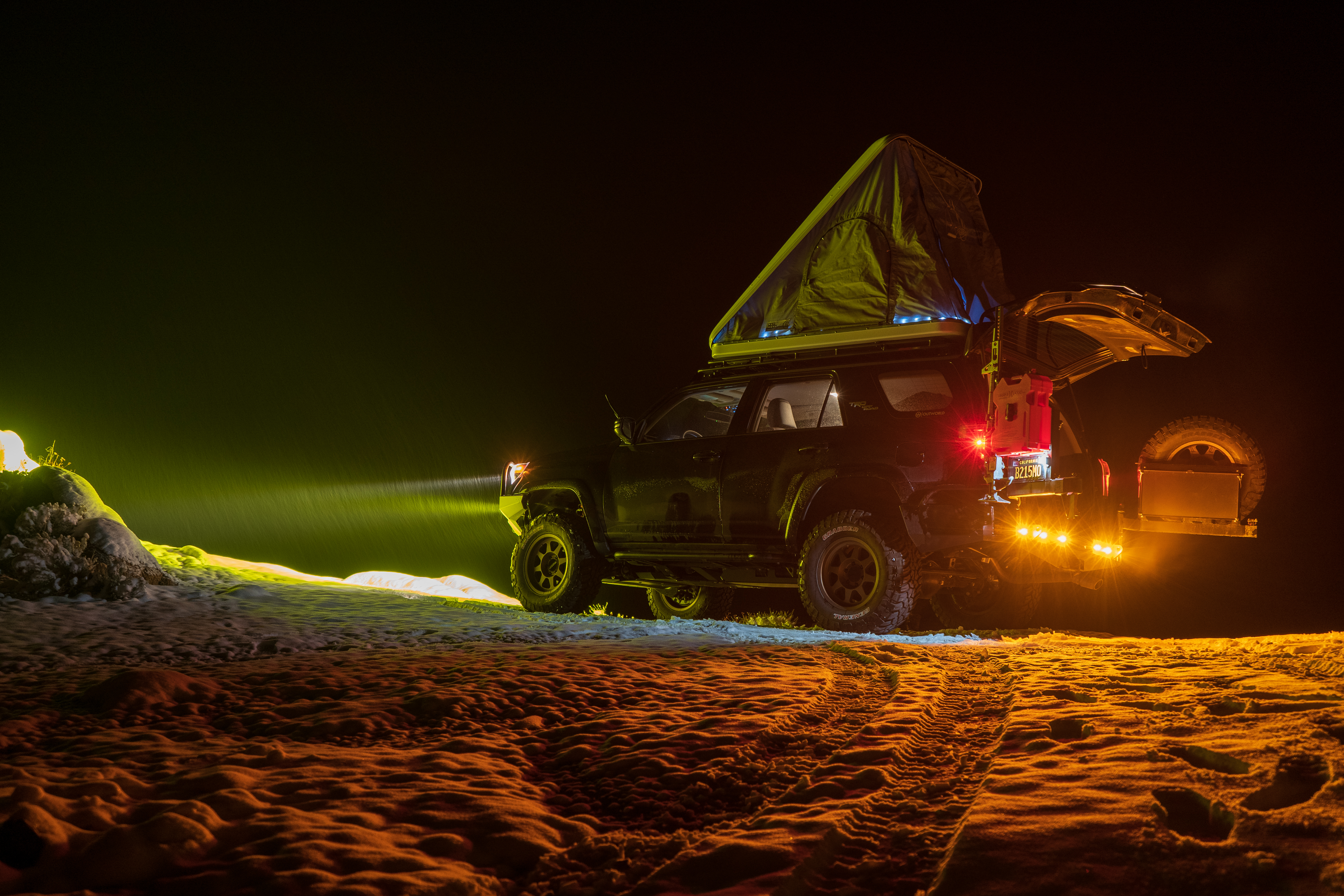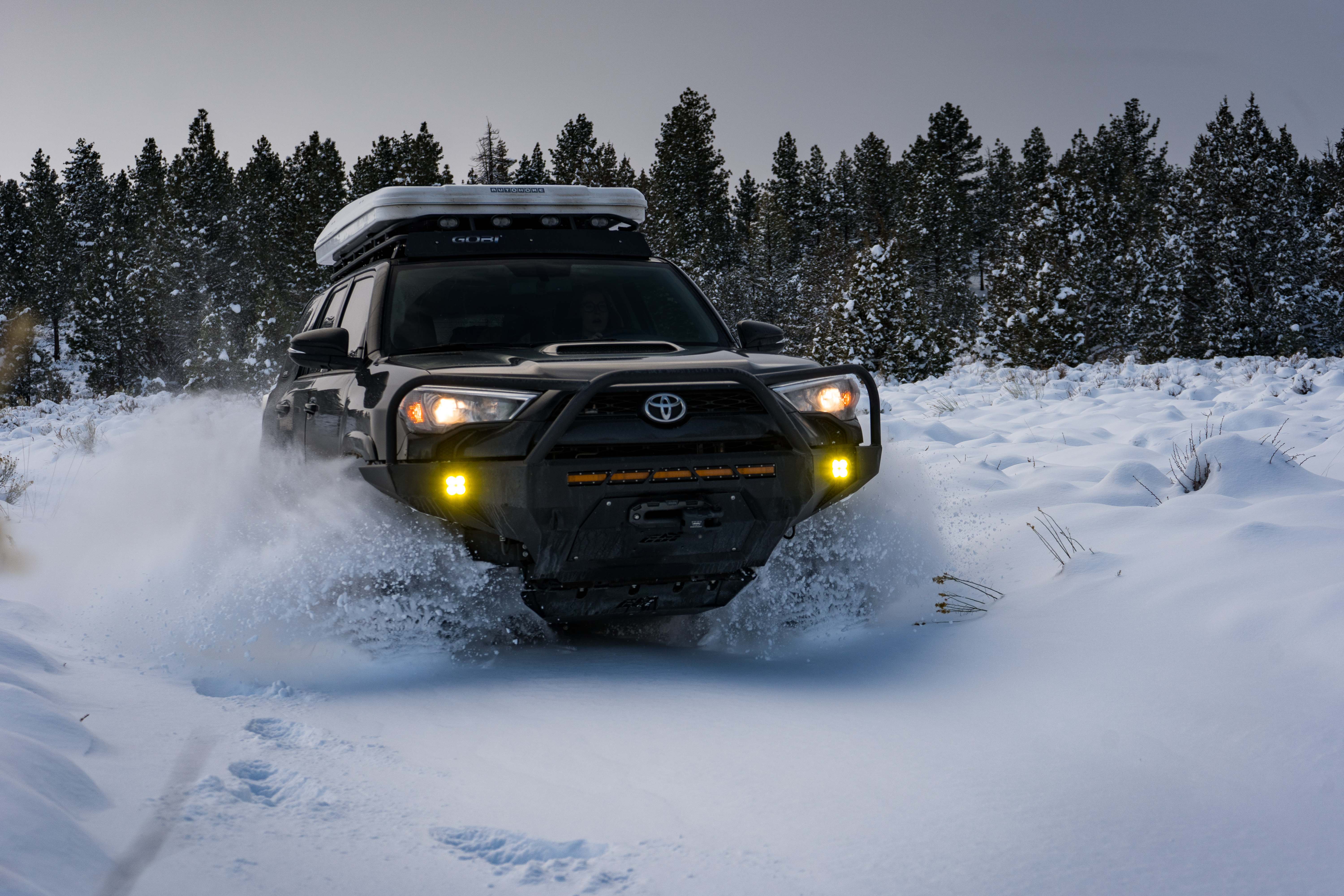By Outworld’s Weston Miller
Winter has arrived in full force across the country, and masses are flocking to check out the sights. And although snowfall creates some of the most beautiful landscapes, with it comes hazardous conditions that can easily turn a winter wonderland into a nightmare. So, before you pack in and head for higher elevation, take a look at a few of our essential tips.
Have the right tires
This is rule #0. Your summer tires are no match for an inclement winter. Even all-season tires with low tread are a liability when snow and ice are present. If winter traveling is common, look for these two tire ratings: M+S, or the snowflake symbol. Both have met a minimum standard for performance in winter conditions and allow you to pass unchained in more moderate situations. The Grabber X3 is M+S rated, and the Grabber A/T X is snowflake rated. The A/T X is also studdable, providing additional traction for those who routinely encounter snowy conditions.
Going solo? Report your route.
This is true for any season, and whether it's your best friend or mother-in-law, someone should have knowledge of your intended trip route. Your situation can change quickly in winter weather, and if it does, it's great reassurance that someone has your itinerary. Providing the days and different locations of your trip can drastically reduce the time it takes to locate you.
Check the weather forecast
Sometimes a few hours makes a world of a difference. By learning when a storm is going to hit, you can avoid the worst conditions by tweaking your travel times. Highway patrol and transit departments have become very active on social media in recent years - helping travelers navigate safely with real-time, on-location updates. Between their posts and the forecast, you can leave early to miss the storm, or wait a bit longer for the snow plows to do their thing.

Bring chains - and know how to use them
This applies to everyone - even those with fully built expedition vehicles. Eleven states REQUIRE you to have snow chains in your vehicle during any potential winter storms. And when the weather is at its worst, road blocks can be set up ensuring all vehicles to be chained - no exceptions.
Make sure your chains fit your exact tire size. Just as important is knowing how to install them, and on which tires (QUICK-TIP: front wheel drive vehicles - chains on the front. Rear wheel drive: chains on the rear). The worst time to learn is when you need them most, so spend a few minutes at your house getting familiar with installing and uninstalling your chains before venturing out.
Emergency essentials
Carry at least a few protein bars and a gallon of water per person in the vehicle. If you have the means, something like a Jetboil and freeze dried food options like Mountain House can make the best of a bleak situation. Always carry extra blankets and layers in your vehicle - including one waterproof/resistant garment. Gloves and extra socks are a must, If space permits, snag an indoor-safe propane heater like a Mr. Buddy so you aren't solely relying on your vehicle's heater. Jumper cables and a tow rope great to have in your vehicle year-round. For the solo trekker, a handheld battery jumper is great, cheap insurance from being stranded by a dead battery.
These are just a few key suggestions from years of winter experience, but the most important thing is knowing your own limits before venturing out. Understanding the capabilities of your tires, your vehicle, and your own driving skills, is the best way to avoid problems and keep you on, or off, road successfully throughout the winter. Be safe and have fun out there!


